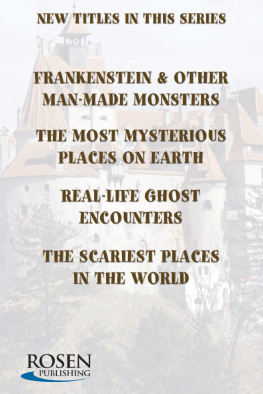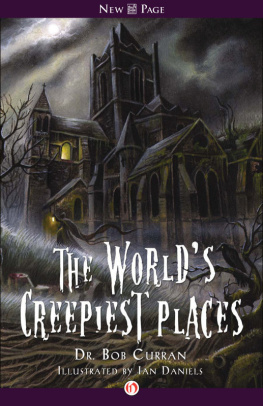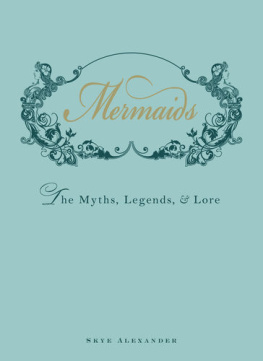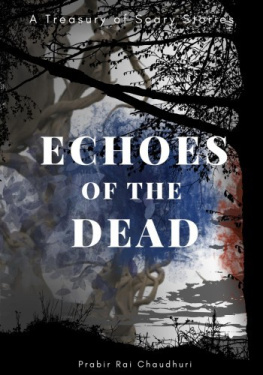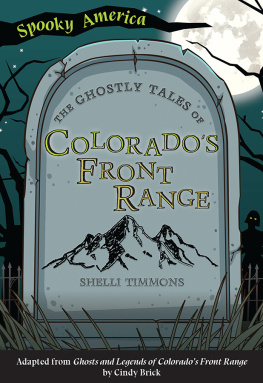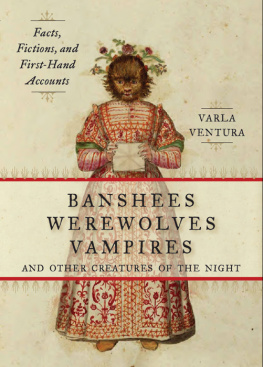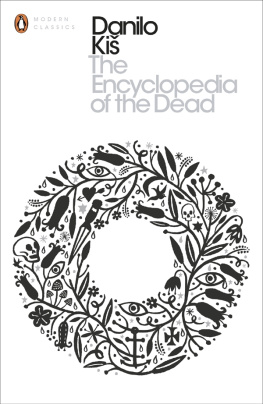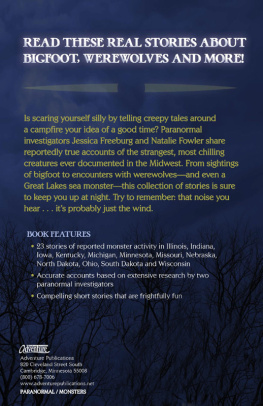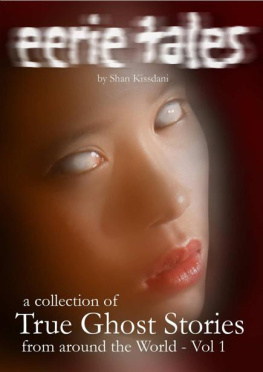Encyclopedia of the Undead
A FIELD GUIDE TO CREATURES THAT CANNOT REST IN PEACE
Dr. Bob Curran

Copyright 2006 by Dr. Bob Curran
All rights reserved under the Pan-American and International Copyright Conventions. This book may not be reproduced, in whole or in part, in any form or by any means electronic or mechanical, including photocopying, recording, or by any information storage and retrieval system now known or hereafter invented, without written permission from the publisher, The Career Press.
ENCYCLOPEDIA OF THE UNDEAD
EDITED BY GINA TALUCCI
TYPESET BY EILEEN DOW MUNSON
Cover design by Lu Rossman/DigiDog Design
Cover illustration by Ian Daniels
Printed in the U.S.A. by Courier
To order this title, please call toll-free 1-800-CAREER-1 (NJ and Canada: 201-848-0310) to order using VISA or MasterCard, or for further information on books from Career Press.

The Career Press, Inc., 3 Tice Road, PO Box 687,
Franklin Lakes, NJ 07417
www.careerpress.com
www.newpagebooks.com
Library of Congress Cataloging-in-Publication Data
Curran, Bob.
Encyclopedia of the undead : a field guide to creatures that cannot rest in peace / by Bob Curran.
p. cm.
Includes index.
ISBN 1-56414-841-6 (pbk.)
1. Vampires. 2. Werewolves. 3. Zombies. 4. Ghouls and ogres. I. Title.
GR830.V3C87 2006
398.45dc22
2005056184
To my wife, Mary, and my children, Michael and Jennifer, for all their help, support, and tolerance during the writing of this book.
Acknowledgments
To the staff at New Page Books for all their help with this book.
Contents
Preface
The purpose of this book is to explore both the history and perceptions of the Undead, and whether legends concerning them have in their roots some form of reality. It also looks at how these perceptions have developed and deeply ingrained themselves within the human psyche. Through the years, both aspects have often become so inextricably intertwined that it is sometimes difficult to delineate the various strands that make up the beliefs and treat them separately. The concept of the Undead must be viewed as a cohesive whole. An understanding of such interconnected historical detail and perceptual development does not, therefore, readily lend itself to the piecemeal and fragmented entry system, which means that the reader has to refer back to other entries in order to understand the topic. So that full justice can be done to the areas considered, it has been decided not to follow what might be considered as the standard procedures for encyclopaedias or directories. Rather, the book follows a more flowing approach, so that the topic in question can be fully explored, but under a series of general subject headings that will guide the reader to the specific area which is being considered. In this way, we can get a much better picture of how perceptions of the Undead and supernatural creatures have grown and changed over the years. In this way, we feel that we can do the subjects covered a proper justice.
I am, nevertheless, well aware that some readers may require some form of listing in order to pick up on specialisms and topics of particular interest. To this end, I have placed a full AZ listing at the back of the book. This approach, I hope, will give an ordered, comprehensive, and readable text whilst also providing specific points to which the reader can refer. I realize, of course, that this may not be the normal approach to such works but then, the subjects with which we are dealing are not normal either.
The concept of the Undead, and of the beings that haunt the deepest recesses of our minds, continue to both alternately terrify and fascinate us. They are complex, shifting entities, deriving their character and substance from a number of sources, both ancient and modern. I hope that, in both content and structure, this book has done them a frightening justice.
Introduction
A Carnival of Terrors
We see Agencies above the reach of our comprehension and things performed by Bodies seemingly Aerial, which surpass the strength, power, and capacity of the most robust Mortal.
Richard Bovet, Pandaemonium
Stories concerning the Undead have always been with us. From out of the primal darkness of Mankinds earliest years, come whispers of eerie creatures, not quite alive (or alive in a way which we can understand), yet not quite dead either. These may have been ancient and primitive deities who dwelt deep in the surrounding forests and in remote places, or simply those deceased who refused to remain in their tombs and who wandered about the countryside, physically tormenting and frightening those who were still alive. Mostly they were ill-definedstrange sounds in the night beyond the comforting glow of the fire, or a shape, half-glimpsed in the twilight along the edge of an encampment. They were vague and indistinct, but they were always there with the power to terrify and disturb. They had the power to touch the minds of our early ancestors and to fill them with dread. Such fear formed the basis of the earliest tales although the source and exact nature of such terrors still remained very vague.
And as Mankind became more sophisticated, leaving the gloom of their caves and forming themselves into recognizable communitiestowns, cities, whole culturesso the Undead travelled with them, inhabiting their folklore just as they had in former times. Now they began to take on more definite shapes. They became walking cadavers; the physical embodiment of former deities and things which had existed alongside Man since the Creation. Some still remained vague and ill-defined but, as Mankind strove to explain the horror which it felt towards them, such creatures emerged more readily into the light.
In order to confirm their abnormal status, many of the Undead were often accorded attributes, which defied the natural order of thingsthe power to transform themselves into other shapes, the ability to sustain themselves by drinking human blood, and the ability to influence human minds across a distance. Such powersdescribed as supernaturalonly leant an added dimension to the terror that humans felt regarding them.
And it was only natural, too, that the Undead should become connected with the practice of magic. From very early times, Shamans and witchdoctors had claimed at least some power and control over the spirits of departed ancestors, and this has continued down into more civilized times. Formerly, the invisible spirits and forces that thronged around mens earliest encampments, had spoken through the tribal Shamans but now, as entities in their own right, they were subject to magical control and could be physically summoned by a competent sorcerer. However, the relationship between the magician and an Undead creature was often a very tenuous and uncertain one. Some sorcerers might have even become Undead entities once they died, but they might also have been susceptible to the powers of other magicians when they did.
From the Middle ages and into the Age of Enlightenment, theories of the Undead continued to grow and develop. Their names became more familiarwerewolf, vampire, ghouleach one certain to strike fear into the hearts of ordinary humans. They were no less fearsome than the vague, shapeless entities that had circled the fires of ancient peopleonly now they had a form and a definition. Now, they were set within a context of fear. And they reflected some of the cultural attributes of those who believed in themthe Semite, the European, the African, and later the West Indian. Thus, golems, afreets, zombies, djinni, and draugr wandered by night (and sometimes by day) causing fear wherever they passed. As in earlier times, they may have been seen as the physical manifestations of old gods and powers or the walking deadthose who lay in the churchyards. They also included demonsbeings that had never been truly born but yet included elements of both the living and the dead. Is it any wonder, therefore, that such a caravan of horrors traversed the world on a daily and nightly basis? Such undead beings appeared everywhere and in all cultures.


